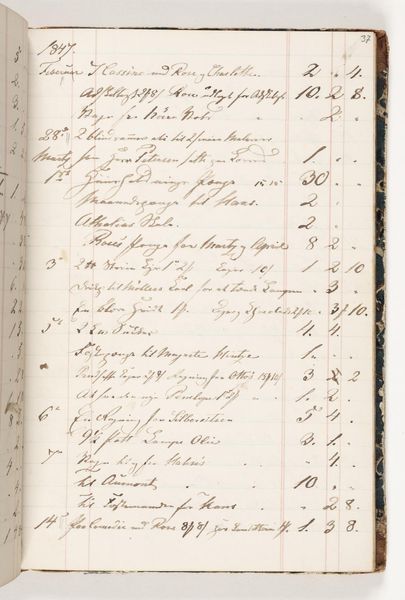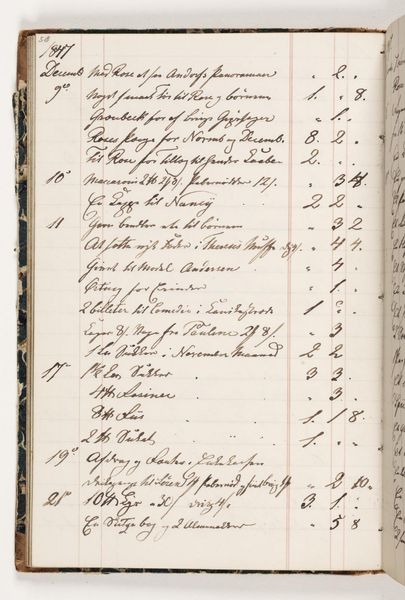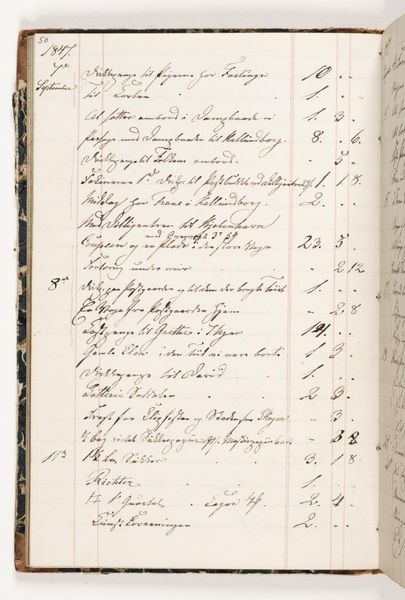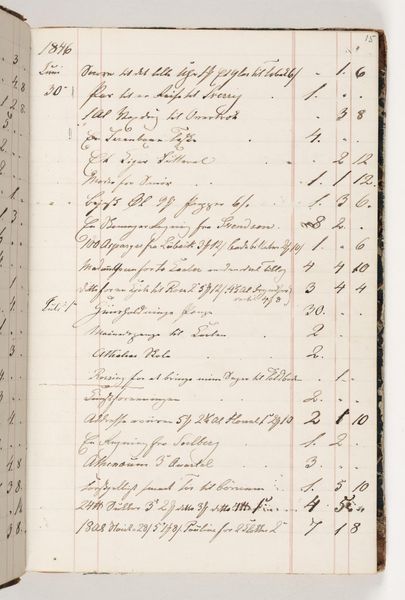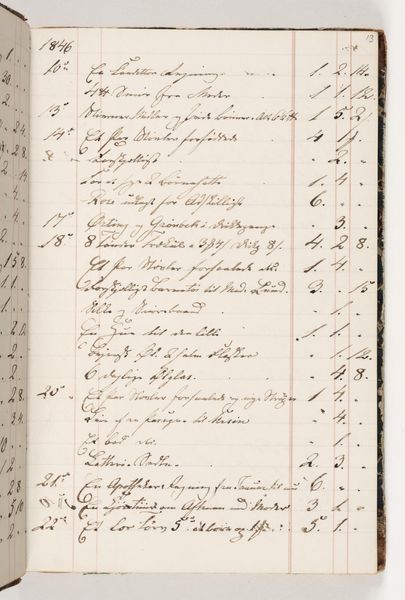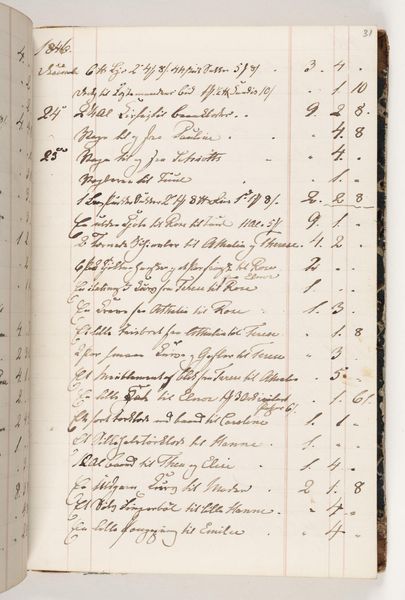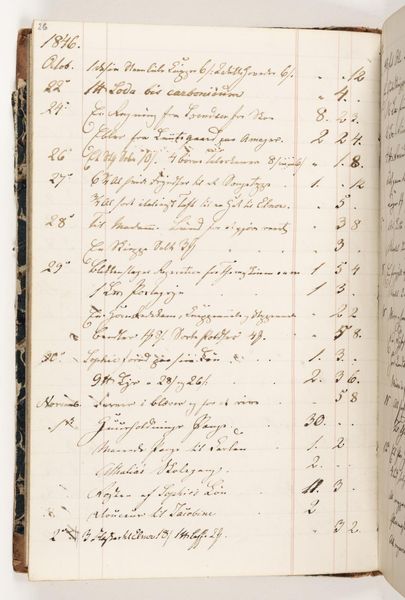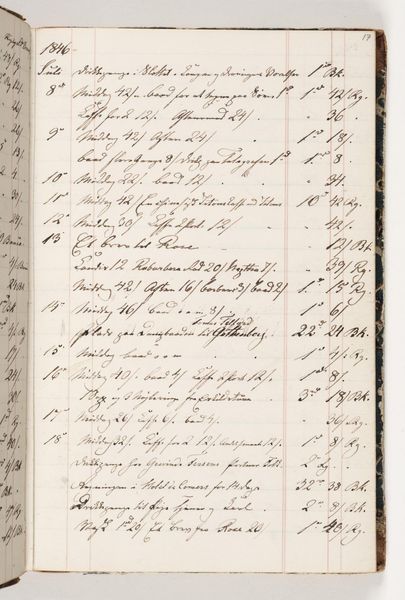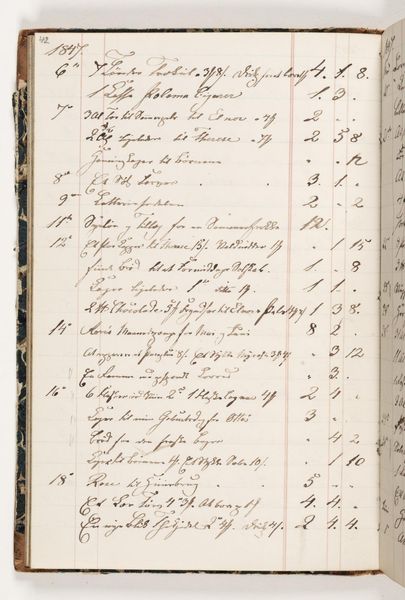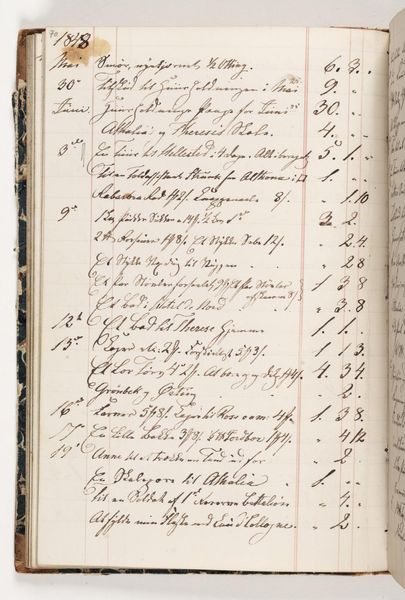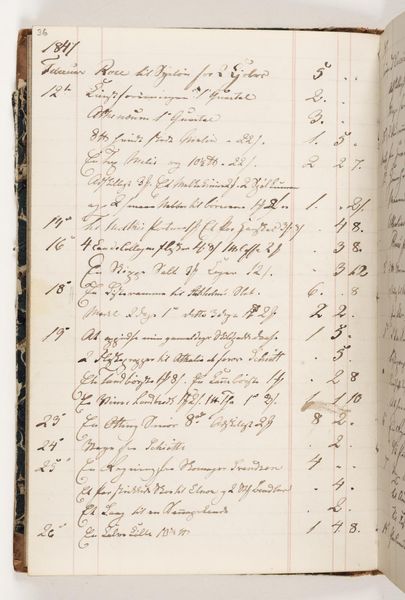
drawing, paper, ink
#
drawing
#
paper
#
ink
#
watercolor
Dimensions: 200 mm (height) x 130 mm (width) (bladmaal)
Curator: This artwork by Martinus Rørbye, simply titled "Regnskab 1847", made with ink on paper, provides us with insight into daily commerce in the mid-19th century. Editor: My initial impression is the intimacy conveyed through its small scale and dense inscription. It feels very immediate, almost tactile. Curator: Absolutely. Examining this ledger beyond its formal qualities allows us to see it as a cultural object reflecting societal norms and hierarchies. It offers glimpses into the economy of the time. The carefully inscribed entries provide context to understand the transactions and lives touched by this "Regnskab," illuminating socio-economic realities and the power dynamics implicit in even simple transactions. Editor: True, the neat rows and meticulous penmanship establish a structured, almost rigid visual rhythm, hinting at the orderliness of mercantile bookkeeping, and visually establishing both order and value. I can see that the subtle variations in the thickness of the lines bring a certain texture and depth to the two-dimensional plane, as well. Curator: The materials – ink on paper – contribute to the historical narrative as well, revealing the materiality of everyday life from this time period. Each notation offers small details, acting almost as data points within larger systems. Consider this account book as part of a broader material history that challenges the marginalization of such ephemera by connecting individual stories to widespread, documented societal practices. Editor: So, rather than merely dry documentation, you see the ledger as containing expressive form. These carefully drawn notations offer us today a graphic harmony which speaks, perhaps unconsciously, about organization and a balance in visual tension. Even though there is little physical action visible, the visual form, or graphic content, tells a fuller story through the medium itself. Curator: Precisely. What begins as financial accounting turns into evidence of its historical context, revealing deeper truths when decoded within the frameworks of contemporary society. Editor: I suppose when looked at it in that way, it changes everything about it from merely utilitarian accounting to an expression of culture itself. Curator: I'm glad we could offer that lens into how to view "Regnskab 1847". Editor: Yes, seeing the work from your perspective enriches my experience too!
Comments
No comments
Be the first to comment and join the conversation on the ultimate creative platform.


